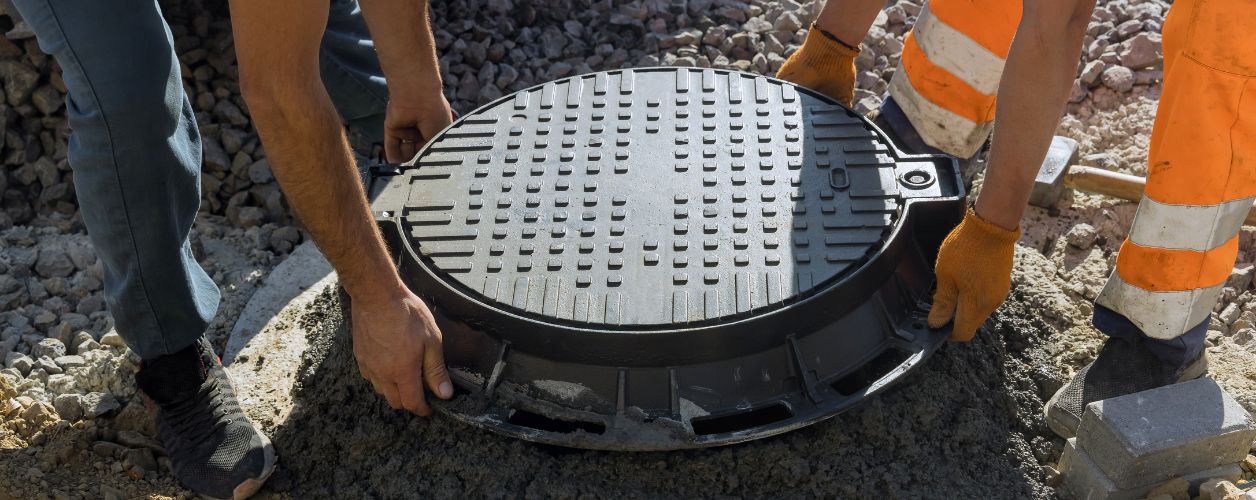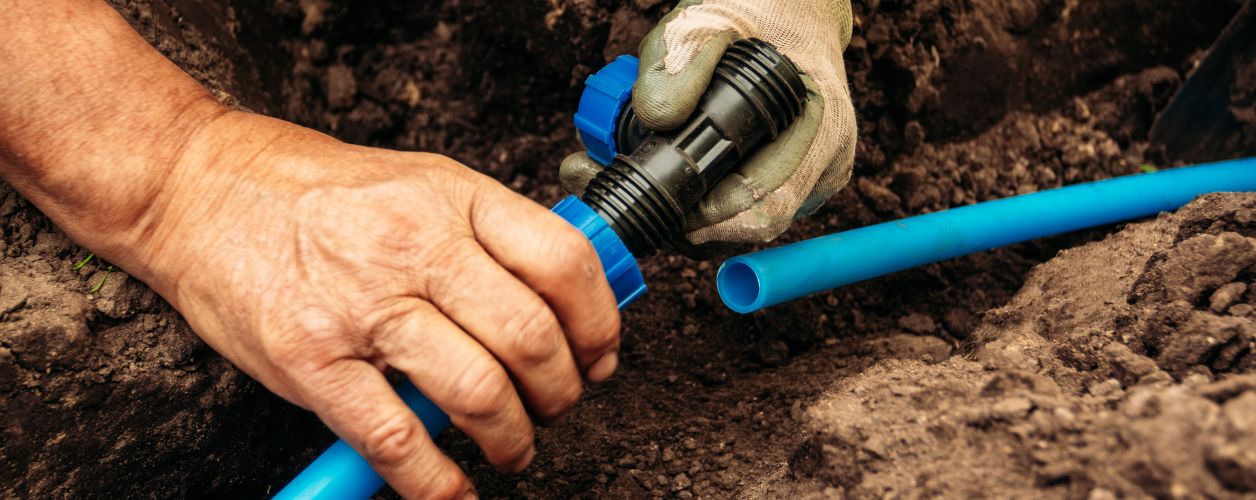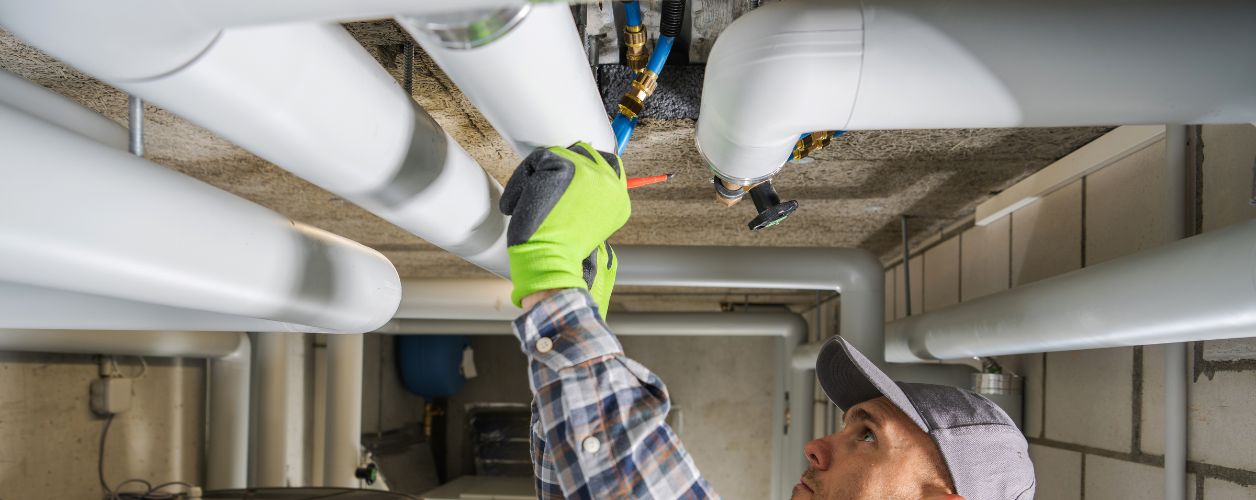Installing an oil tank in the UK is a significant investment, with prices typically ranging between £2,000 and £4,500. This price can fluctuate based on several factors, including the type and size of the tank, whether it's above or below ground, the complexity of the installation, and any additional work required, like excavation or old tank removal.
In a rural section of the UK or where a way of connecting to the mains gas grid is not available, fitting an oil tank is a necessary part of establishing an off-grid heating network. Whether you need to purchase a replacement for an old tank or simply install a new one, you should know what the overall cost of the process is so that you can plan your budget correctly and not face unexpected expenses.
This cost guide can be separated into everything you need to know about the installation of oil tanks in the UK including the types of oil tanks, how much they are expected to cost, the prices of the associated construction work, whether or not you require planning permission, what are the safety considerations, and the maintenance aspects and also how to save money.
Average Prices of Oil Tanks
It is estimated that a domestic oil tank costs between £2,000 and £4,500 to be installed in the UK, depending on numerous factors such as the size of the tank, the material to be used, the location in terms of access, as well as any other additional services to be performed. On one hand, simple and basic jobs may turn out cheaper than projected, but at the same time, an advanced system or a distant area can be more expensive.
The Price of the Oil Tank itself
One of the largest percentages of the total cost goes to the oil tank itself. Examples of domestic tanks include most tanks that are between 1,000 and 2,500 litres. The cost of a smaller and single-skin plastic tank ought to begin at approximately £800, whereas a larger and bunded steel tank may reach as much as £2,000.
Concrete or Sub-Grade Works
An oil tank should be placed on a fire-proof level platform which can bear its weight at full capacity. The cost of installing this base, often handled by concrete contractors, may range between £250 and £750, based on the size of the tank and whether the ground is in good condition.
The groundwork can be minimal in case your garden or yard is already level and acceptable. However, this is not guaranteed in places where excavations may be required or some other material might be necessary such as concrete which is going to increase the cost.
Fuel Line connection and Pipework
When the tank is mounted, you should pipe it to your boiler system by using the appropriate fuel pipes, valves, and filters. This can cost between £300 and £700, depending on the distance between the tank and the boiler, how complex the routing is, and whether existing pipework can be reused.
The cost is pushed up the longer the route or the more complicated the route, the more labour and materials are required.
Installing and Labour fees
The UK requires the services of a heating engineer or OFTEC-registered technician to support the regulations. A professional installation is essential to achieve every legal and safety requirement. Labour costs typically fall between £600 and £1,200, which includes positioning the tank, securing it in place, setting up pipework, testing for leaks, and ensuring compliance with UK building and environmental regulations.
In the event the job is to be carried out in tight areas or working with big gear, it might take longer, and more money might be charged.
Old Oil Tank Removal (When Necessary)
In addition, in the event that you are replacing a tank, you will also have to take into consideration the cost of safely disposing of the old tank. This typically adds an extra £250 to £600 to the project and requires a waste clearance service.
Factors That Influence Oil Tank Installation Costs
1. Type and dimensions of the Tank
The sizes of oil tanks vary depending on the application though it is normally between 1,000 and 2,500 litres capacity in residential areas. The larger the tank, the more costly it will be.
- 1,000-litre plastic tank: £800 – £1,000
- 1,500-litre steel tank: £1,000 – £1,500
- 2,500-litre bunded tank: £1,600 – £2,500
2. Material - Plastic vs Steel
- Plastic tanks are lightweight, rust-proof, and cheaper (starting around £800).
- Steel tanks are more robust and secure but cost more and are heavier to install (starting around £1,200).
3. Single-skinned tanks vs Bunded tanks
In a bunded tank, there is a second wall (effectively a tank within a tank) which adds additional protection in case of a leak, which is now a legal requirement in most installations. They are also very environmentally friendly and safe, and recommended, and can cost 30-50% more than single-skinned tanks.
4. Above Ground vs. Underground Installation
- Installations that are above ground are easier and less costly.
- Underground tanks require excavation, added safety measures, and complex pipework, potentially increasing costs to £4,000–£7,000. This is a job for experienced groundworkers.
5. Place of Positioning
In case your place of installation is either remote or not easily accessible, not close to your house, or on a slant, it complicates matters and increases labour charges.
6. Foundation Requirements
The weight of a full tank should have a proper base to hold. This can be a concrete slab, paving slabs, or a prefabricated tank stand. Costs vary based on size and material but generally fall between £250 and £750.
7. Pipe work and Fuel Lines
The pipe cabin that links the tank to your boiler has to comply with certain laws and safety standards. The expenses are subject to the length and standard of connections.
8. Elimination and disposal of the old Tanks
The extraction of an old oil tank (particularly a metal tank with some oil in it) requires professional treatment. Expect to pay £250 to £600 for safe disposal.
Other Expenses to Take into Account
1. Planning Permission (where a necessity)
A planning permission is normally not required for most of the oil tank structures unless:
- You are in a listed building or a conservation area.
- The tank is more than 3500 litres.
- The installation is less than 1 metre from a boundary or a highway.
Just to be on the safe side, consult your local planning authority.
2. Construction Standards and Inspections
Your fitting has to comply with UK Building Regulations. A self-certification can be an OFTEC-registered installer. If not, you’ll need building control to inspect the installation—this could cost around £150 to £300.
3. Fire Safety pass
Your tank has to be found:
- A minimum of 1.8 metres distance away from buildings or borders.
- Minimum 760mm clearance of non-fire-rated fencing.
If your site doesn’t meet these clearances, additional fire protection measures may be needed, like fire-resistant barriers, which can cost £100 to £400 extra.
4. Monitoring and Oil Gauge Systems
All of the tanks include basic oil level gauges, but you may prefer to buy a remote or smart monitor. These add around £50 to £200.
5. Security Add-Ons
In certain jurisdictions, oil theft is a threat. You can think of putting locks, cages, or CCTV:
- Lockable tank caps: £30 – £50
- Security cages: £250 – £600
- Smart sensors or CCTV: £100 – £300+ from a security system installer
Installation Types And Breakdown of Cost
Normal Above-Ground Fit(bunded plastic tank)
- Tank: £1,200
- Base: £300
- Pipework: £500
- Labour: £800
- Total: £2,800
Installation of Underground Steel tank (Complex Site)
- Tank: £2,000
- Excavation & Base: £1,200
- Pipework: £700
- Labour: £1,100
- Safety extras: £400
- Total: £5,400
After Installation Costs, Maintenance Costs
After you have put up an oil tank, it will need constant maintenance:
- Annual service: £80 – £150
- Oil filter replacement: £20 – £50
- Tank cleaning (every 5–10 years): £100 – £300
- Leak repairs: Minor £50–£200, major could go over £1,000
Keeping a maintenance log is also a good idea, both in terms of insurance and when it comes to resale.
How to Save Costs on the Installation of Oil Tanks
One should select a Bunded Plastic Tank
These comply with most standards and provide a high level of safety, and come cheaper than steel.
Fit in summer
During the warm months, the demand loses its ground, so the rates of installers can become lower.
Boiler Upgrade bundle
Possible labour cost reduction can be done through combining jobs, like when replacing the heating system.
Compare Prices
When considering an installer, always ensure that you compare at least 3 quotes from installers who have become OFTEC registered.
Do a Search for Grants or Local Help
Look at some councils that may provide grants or energy efficiency schemes, and ask your local authority.
Environmental Considerations
The problem of oil leaks is a hazard to the environment. Most installations are currently under the rules of the UK that mandate use of bunded tanks most especially in close proximity to water sources.
Always:
- Employ OFTEC-registered people
- Make a check-up of your tank annually
- Make quick reporting and correction of leaks
- Report and fix immediately
The lack of observance may cause punishment with hefty fines and clean-up expenses, not always included in a standard home insurance policy.
When Should You Replace an Existing Oil Tank?
You may need a new tank if:
- The tank you are using now is more than 20 years old.
- It is indicated by signs of rust, bulging, or leaks.
- Your car or vehicle has had a lot of breakdowns or oil discrepancies.
Never wait to replace it; old tanks may be a source of fire and an environmental hazard.
Things To Remember for Constructing a Tank Base
The oil tank has to be put in a place with an appropriate base. It has to be:
- Graduate and constant
- Strong enough to hold all the load of the tank (including oil)
- Extending no less than 300mm on all sides beyond the footprint of the tank.
Common options:
- Concrete base (most common): £300 – £600
- Prefabricated metal or plastic stands: £200 – £450
- Paving slab base (budget solution): £250 – £400
The Time Needed to Set Up an Oil Tank.
- Easy over-ground installation: 1 day
- Multi-phased installation or underground tank: 2-5 days
- Old tank excavation: That puts on one day, usually
Selecting the Correct Oil Tank Size for Your Home
Small Tanks ( approx. 1,000 Litres)
Small homes can use a 1,000-litre tank. They are best suited to one- or two-bedroom cottages or bungalows. These tanks are small in size and can be fitted in a tight place. They cost about £800 to £1,000. You will have to replenish more frequently, yet they are ideal to use in homes where there will be less oil consumption.
Med Tanks (1, 250 Litres)
Two or three-bedroom houses are good with a 1250-litre tank. It contains larger amounts of oil, and thus, you will not have so many deliveries. These tanks cost between £1,000 and £1,200.
Big Tanks (2,000 Litres)
Larger homes are good to have a 2,000-litre tank. It is applicable in four-bedroom homes or buildings that consume a high amount of oil. These tanks cost around £1,400 to £1,700. They allow the purchase of oil in large quantities, which may be cost-effective.
Conclusion
The amount will vary depending on the tank you select, conditions on site and the degree of security you need. Initial fees may be expensive but the safe and regulatory installation will provide heating in future.
Never hesitate to call on the OFTEC registered professionals, familiarize yourself with the local regulations, as well as have a maintenance plan. In that way, not only will you be preserving your home and surroundings, but also increase the worth of your investment.



